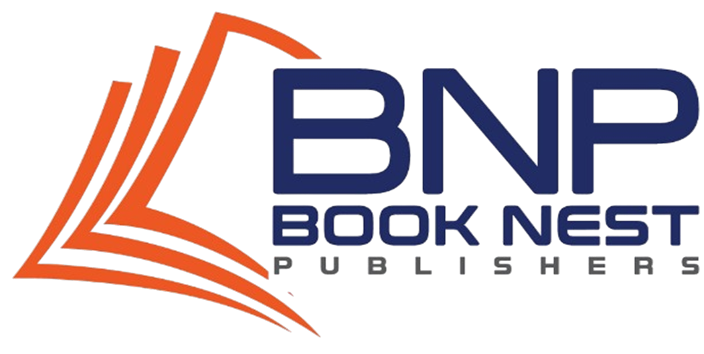Publishing a book is a dream for countless aspiring authors. Whether you’ve just finished your manuscript or you’re still in the early stages of book writing, the journey from idea to bookstore shelves can feel overwhelming. The good news is that today’s publishing industry offers more opportunities than ever — from working with traditional book publishers to self-publishing through platforms like Amazon Kindle Direct Publishing (KDP), Lulu, and more.In this guide, we’ll break down how to publish a book step-by-step, so you can navigate the book publishing process with clarity and confidence.
Step 1: Craft a Strong Manuscript
The foundation of every successful book is solid book writing. No matter your genre — fiction, non-fiction, children’s literature, or religious works — the quality of your content matters most.
Tips for effective book writing:
- Start with an outline: This keeps your narrative or content organized.
- Write consistently: Even 500 words a day adds up quickly.
- Know your audience: Writing for a target readership makes your book more marketable.
- Revise relentlessly: Great writing comes from rewriting.
If you plan to approach traditional book publishers, a polished manuscript will improve your chances. For self-publishing, quality is equally important because reader reviews can make or break your sales.

Step 2: Editing — The Professional Touch
Editing is where good book writing becomes great. There are three main types of editing you should consider:
- Developmental Editing – Improves the structure, pacing, and clarity of your book.
- Copy Editing – Corrects grammar, punctuation, and consistency issues.
- Proofreading – The final polish before publication.
Traditional book publishers often handle editing in-house, but if you’re self-publishing, investing in a professional editor is a wise choice. A well-edited book builds credibility and reader trust.
Step 3: Mastering Book Formatting
Book formatting ensures that your text is professionally presented, both in print and digital formats.
For print books, this means:
- Setting the correct page size and margins.
- Using consistent chapter headings and fonts.
- Adding page numbers and section breaks.
For eBooks, formatting must adapt to different screen sizes. Amazon Kindle, for example, requires specific formatting standards to ensure readability on devices like the Kindle Paperwhite or Kindle app.
Tools like Kindle Create, Adobe InDesign, and Vellum are popular, but many authors prefer to hire experts in book formatting to ensure a polished, bookstore-quality result.
Step 4: Choosing Your Publishing Path
You have two main options:
1. Traditional Publishing
With traditional publishing, you submit your manuscript to book publishers or literary agents. If accepted, the publisher handles editing, book formatting, cover design, distribution, and marketing. This route offers prestige and wide distribution but is competitive and often slow.
2. Self-Publishing
Self-publishing platforms like Amazon Book Publishing (Kindle Direct Publishing), Lulu, and IngramSpark allow you to publish quickly and retain more creative control. You manage your own book formatting, cover design, and marketing, but you also keep a larger share of the royalties.
Step 5: Publishing on Amazon
If you’re wondering how to publish a book on Amazon, the process is straightforward:
- Create a free account on Kindle Direct Publishing (KDP).
- Upload your formatted manuscript.
- Upload a professional cover design.
- Set your price and royalty rate.
- Publish and make your book available worldwide.
Amazon’s platform supports both Kindle eBooks and paperback editions, making it a powerful tool for reaching readers globally.
Step 6: Specialized Publishing Options
Depending on your book’s focus, there are niche publishing avenues:
- Children’s Book Publishing Companies – Specialize in illustrated books for younger readers.
- Catholic Book Publishing – Focused on religious texts, devotionals, and spiritual works.
- Lulu Book Publishing – Offers print-on-demand services and broad distribution options.
These specialized book publishers understand the unique formatting, design, and marketing needs of their genres.
Step 7: Cover Design and Marketing
Your cover is your book’s first impression. Even with exceptional book writing, readers may skip your title if the cover looks amateurish. Professional designers understand color theory, typography, and genre expectations, ensuring your book catches the right audience’s eye.
Marketing is equally important. Use social media, author websites, email newsletters, and book signings to connect with readers. Even traditional book publishers expect authors to be active in promotion.
Step 8: Jobs in Book Publishing Houses
If you’re fascinated by the publishing process itself, consider a career in the industry. Jobs include:
- Editors – Refine and improve manuscripts.
- Designers – Handle cover and book formatting.
- Marketing Specialists – Promote books to the right audiences.
- Production Managers – Oversee printing and distribution.
Working in a publishing house offers valuable insight into the industry, whether you plan to be an author, editor, or marketing expert.

Final Thoughts
Learning how to self-publish a book or work with traditional book publishers is an exciting journey that blends creativity with strategy. Focus on producing strong book writing, invest in professional editing and book formatting, and choose the publishing path that aligns with your goals.
Whether you dream of holding your printed book in a bookstore, seeing your eBook climb Amazon’s charts, or building a long-term writing career, the right knowledge and preparation can make it happen.
At BookNest Publishers, we guide authors through every step — from manuscript to market — so your story can reach the readers it deserves.


